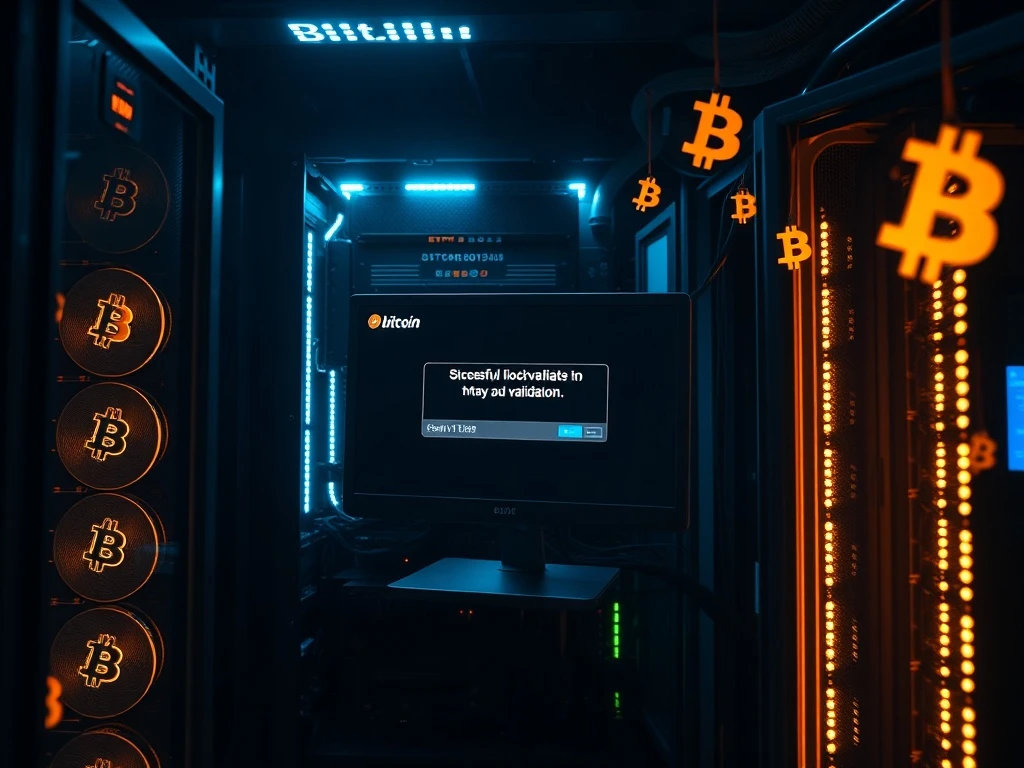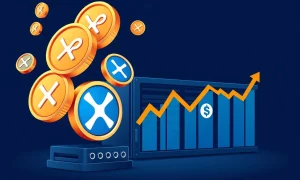In an incredible display of persistence and luck, a solo Bitcoin miner achieved what many considered impossible—beating astronomical 1-in-4.26 million odds to claim a full block reward worth $373,000. This remarkable victory occurred on July 26, 2025, when an independent miner successfully validated block 907,283 through the innovative Solo CKPool platform.
How the Solo Bitcoin Miner Achieved This Rare Win
The solo Bitcoin miner overcame tremendous challenges in a network dominated by industrial-scale operations. Bitcoin’s network difficulty hovered near all-time highs around 26 trillion, making this achievement particularly impressive. The miner claimed the complete block reward of 3.125 BTC, plus $3,400 in transaction fees from 4,038 processed transactions.
This success demonstrates that despite overwhelming corporate competition, individual miners still have opportunities for significant rewards. The global hashrate currently exceeds 902 exahashes per second, creating an intensely competitive environment for all participants.
Understanding Solo CKPool Mechanics
Solo CKPool represents a unique approach to Bitcoin mining that maintains decentralization principles. Unlike traditional pools that distribute rewards based on contributed hash power, this platform allows miners to work independently while using shared infrastructure.
Key features of Solo CKPool:
- Provides entire block reward to the successful miner
- Offers infrastructure stability and better connectivity
- Maintains true solo mining principles with shared resources
- Enables small-scale miners to compete against large operations
Miners can track their performance through solostats.ckpool.org and mempool.space, which help verify block submission status and mining statistics.
The Astronomical Odds of Solo Mining Success
The probability of a solo Bitcoin miner finding a block remains exceptionally low in 2025. With mining difficulty exceeding 127 trillion and global hashrate approaching 1,000 EH/s, the challenges are substantial.
A miner operating with 1 petahash per second faces approximately 1-in-4.26 million daily odds of solving a block. Statistically, an individual is more likely to experience a lightning strike than achieve solo mining success at this rate.
Despite these overwhelming odds, several solo Bitcoin miners have achieved remarkable success throughout 2025:
- February: Block 883,181 solved for 3.125 BTC (~$300,000)
- March: Modest 480 GH/s Bitaxe rig mined full block
- June 5: Block 899,826 validated for $330,386 reward
Essential Factors Behind Solo Mining Victories
Successful solo Bitcoin miners combine several critical elements to achieve their goals. Application-specific integrated circuits (ASICs) provide the necessary computing power with energy efficiency. These specialized machines give small-scale operators a competitive edge when paired with platforms like Solo CKPool.
Persistence remains equally important as technical capability. Most solo mining attempts yield no rewards, but continuous operation increases the probability of eventual success. The July 26 winner demonstrated that determination combined with efficient hardware can produce extraordinary results.
Luck inevitably plays a role in these rare victories. Even with optimal equipment and continuous operation, timing and chance factors significantly influence outcomes in Bitcoin’s proof-of-work system.
Industry Challenges and Solo Mining Resilience
The Bitcoin mining industry faces mounting pressures in 2025. Average costs to mine 1 BTC exceeded $70,000 in Q2, driven by escalating hashrate and difficulty levels. Corporate miners confront tight profit margins, forcing strategic shifts toward diversification.
Major mining operations increasingly explore alternative revenue streams including AI data centers and high-performance computing. These moves leverage existing infrastructure for more stable returns amid Bitcoin’s volatility.
Despite these industry-wide challenges, solo Bitcoin miners continue achieving occasional victories. These successes highlight Bitcoin’s foundational decentralization principles and demonstrate that individual participation remains viable.
Bitcoin’s Mining Reward Evolution
Bitcoin’s block reward structure has evolved significantly since inception. The network launched in 2009 with 50 BTC per block, decreasing through scheduled halving events:
- 2012: Reduced to 25 BTC per block
- 2016: Decreased to 12.5 BTC
- 2020: Lowered to 6.25 BTC
- 2024: Current reward of 3.125 BTC
This predictable reduction mechanism ensures scarcity by capping total Bitcoin supply at 21 million coins. The decreasing rewards increase competition while maintaining network security through transaction fees.
FAQs About Solo Bitcoin Mining
What makes solo Bitcoin mining so difficult today?
Solo mining faces extreme challenges due to Bitcoin’s high network difficulty (over 127 trillion) and massive global hashrate (approaching 1,000 EH/s). Industrial-scale operations dominate the space, making individual success statistically rare.
How does Solo CKPool differ from traditional mining pools?
Solo CKPool allows individual mining while providing shared infrastructure. Unlike traditional pools that split rewards, it awards the entire block reward to the successful miner but offers no partial rewards for contributed work.
What hardware do successful solo miners typically use?
Most use Application-Specific Integrated Circuits (ASICs) designed for Bitcoin mining. These devices provide high hash rates with relatively low energy consumption, giving individual miners competitive efficiency.
How often do solo miners actually succeed?
Solo mining victories remain extremely rare. With current network conditions, a miner with 1 PH/s has approximately a 1-in-4.26 million chance of solving a block daily. However, several successful cases occurred in 2025.
What motivates miners to pursue solo mining despite low odds?
Miners are driven by potential high rewards (currently 3.125 BTC + fees), belief in Bitcoin’s decentralization principles, and the possibility of achieving life-changing financial success through a single block discovery.
How does solo mining contribute to Bitcoin’s network security?
Solo mining enhances decentralization by distributing hash power among more participants. This reduces concentration risk and strengthens network resilience against potential attacks or centralized control.








